|
Recent events have understandably caused many of our newer citizens to inquire about how they will receive information related to a large scale emergency. Large scale emergencies are those that will impact a large swath of the population or a significant portion of the geographical area. Over the past several decades, the Village of Cloudcroft has developed a comprehensive strategy for alerting the population of an emergency within, and immediately surrounding, our boundaries.
The group of specialized personnel within the Cloudcroft Fire Department responsible for emergency planning is our Emergency Management team. This group has developed Emergency Operations Plans, Mitigation Plans, Communication Plans, etc , as well as coordinating with surrounding agency’s/entities/businesses, etc. for comprehensive Response Plans. These plans are reviewed, updated and exercised periodically. Included within these plans are the notification and alerting mechanisms for Cloudcroft. They are as follows: Emergency Alert Sirens: Very loud audible sirens (sometimes referred to as air-raid or tornado sirens) are located throughout the Village and are only sounded for evacuation purposes. These sirens are useful while outside your home or business but may be difficult to hear indoors. Cellular phone alert: A federal alerting system called IPAWS can be used to alert all cell phones within a geo-fenced boundary, created for the specific emergency. We currently activate this tool through the State of New Mexico Emergency Operations Center. https://www.fema.gov/emergency-managers/practitioners/integrated-public-alert-warning-system/public Reverse 911: Otero County has a robo-call feature which has the capability of calling all phone numbers which have been registered through the Otero County database. We activate this tool through the Tularosa Basin Regional Dispatch Authority. Feel free to register now at: https://co.otero.nm.us/256/Reverse-911 Radio messaging: Our local Emergency Alert System radio frequency is 97.9 FM. When an emergency occurs which requires disseminating information in mass form, we use this radio station which is available locally and also on the internet. https://www.rock97-9.com/ Social Media: The Cloudcroft Fire Department Facebook page will provide updates to local emergency’s and procedures to follow (as needed): https://www.facebook.com/cloudcroftfiredept Website: The Cloudcroft Fire Department will post such things as burn permits, fire restrictions, and other longer term informational items on our website at: https://www.cloudcroftfd.com/ Evacuation location: Emergency’s are dynamic and we can’t predict where or how we will evacuate, but in a general sense, the location will most likely be to our East along US Hwy 82, in the Mayhill area or Artesia. From there, you may be routed back to Ruidoso or Alamogordo. In addition to the regular testing, updates and enhancements made to the existing systems, the Cloudcroft Fire Department-Emergency Management team is in the process of implementing additional notification tools. https://www.apparmor.com/ We are excited about these new capabilities and plan to debut them later this year.
0 Comments
Lincoln National Forest's Fire Danger elevates to VERY HIGH and Stage I Fire Restrictions Implemented on Smokey Bear and Sacramento Districts ALAMOGORDO, RUIDOSO, CLOUDCROFT, CARLSBAD, NM - April 19, 2018 – With the steady increase in daytime temperatures and constant daily moderate –to high winds, the potential for wildland fire starts increases significantly. Based on current weather and fuel conditions, an increase in visitors and recreational activities on the Forest, and an increase in human-caused fires on the Smokey Bear and Sacramento Districts over the past two weeks, the Fire Danger Rating has elevated to VERY HIGH. Fire Danger Rating signs will indicate a fire danger of VERY HIGH effective Friday, April 20th at 8:00 am, which extends across the entire forest, including Smokey Bear, Sacramento and Guadalupe Districts. A fire danger rating of VERY HIGH means that fires start easily from all causes and, immediately after ignition, spread rapidly and increase quickly in intensity. Spot fires are a constant danger. Fires burning light fuels may quickly develop high intensity characteristics such as long-distance spotting and fire whirlwinds when they burn into heavier fuels. “With the fire danger rating increasing to VERY HIGH, Stage I Fire Restrictions will go into effect for the Smokey Bear and Sacramento Ranger Districts on April 20th at 8:00 am. There will be no fire restrictions on the Guadalupe Ranger District,” said Ryan Whiteaker Fire Staff Officer. “As the season progresses, we may still have opportunities to conduct prescribed fire operations on the Guadalupe District, but moving forward with ignitions will be dependent on site-specific conditions and prescriptions for individual projects,” Whiteaker said. The difference between an unwanted wildfire and a prescribed fire is that the prescribed fire is a planned event and fire is used to treat certain fuels under the oversight of a Burn Boss and firefighting resources that are on scene to ensure that the resource management objectives are being met, as the fire burns at a manageable pace. Firefighters have the advantage because they are able to control the intensity and rate of spread of the fire. With an unwanted wildfire, firefighters respond to an unknown situation and have to make appropriate on-the-spot decisions as the wildfire progresses, all the while, ensuring that firefighter and public safety are priority. Under Stage I Fire Restrictions (Smokey Bear and Sacramento Districts), fires, campfires, charcoal grills, and coal and wood stoves are allowed only in developed campsites or picnic areas where agency-built fire rings or grills are provided for use. Campfires are prohibited at all dispersed camping sites. Stoves, lanterns or heaters fueled by propane or other liquefied petroleum fuels may be used in areas cleared of flammable materials within three feet of the device, if they meet manufacturer’s safety specifications and have on/off switches. Smoking is allowed only in enclosed vehicles or buildings and developed recreation sites. Fireworks are always prohibited on all national forests. For additional information call or visit any of our offices listed below (8 am – 4 pm, M-F).
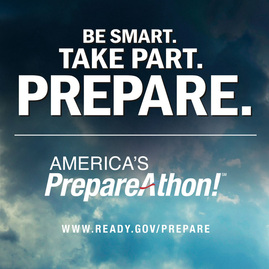 America's PrepareAthon! is an opportunity for individuals, organizations, and communities to prepare for specific hazards through drills, group discussions, and exercises. National PrepareAthon! Day is April 30, 2015 and will revolve around taking the actions to prepare for these six specific hazards: Campaign Goals The goal of this campaign is to increase the number of individuals who:
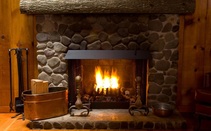 Ensure adequate clearance from combustibles. Have the chimney inspected annually and cleaned if necessary. Do not use flammable liquids to start or accelerate any fire. Keep a glass or metal screen in front of the fireplace opening. Don't use excessive amounts of paper to build roaring fires in fireplaces. Never burn charcoal indoors. Keep flammable materials away from your fireplace mantel. Before you go to sleep, be sure your fireplace fire is out. If synthetic logs are used, follow the directions on the package. Furnace Heating Tips
Wood Stove Safety Ensure adequate clearance from combustibles. Have the chimney inspected annually and cleaned if necessary. Do not use flammable liquids to start or accelerate any fire. Don't use excessive amounts of paper to build roaring fires. Never burn charcoal indoors. Keep flammable materials away from your stove. 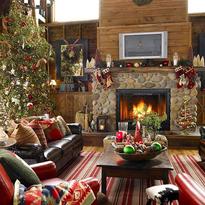 Christmas Tree and Holiday Decorations Fire Safety Decorating homes and businesses is a long standing tradition during the holiday season. Unfortunetly it’s these decorations that increase the chance of fire. Follow a few simple Christmas tree & holiday decoration fire safety tips to ensure Happy Holidays. CHRISTMAS TREES can remain relatively fire resistant if you follow these simple steps:
LIGHTS & DECORATIONS
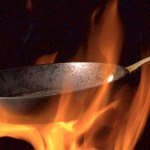 “The hectic nature of entertaining during the holidays makes it easy to overlook even the most basic cooking safety rules." We encourages all home chefs to follow these simple fire-safety tips: 1. Stay in the kitchen. Don't leave the kitchen when you are frying, broiling or grilling. If you leave the kitchen even for a brief time, be sure to turn off all the burners on the stovetop. Don't use the stovetop or oven if you are tired or have consumed alcohol or drugs. 2. Set a timer as a reminder that the range or stove is on. Ranges were involved in three of every five home cooking fires in 2011, with ovens accounting for 16 percent of home fires, according to the NFPA. Check your food frequently, and use a timer to remind yourself that the range, stove or oven is on. They’re an inexpensive way to stay safe while ensuring that your holiday dishes do not overcook. 3. Keep anything that can catch on fire away from the stovetop. Pot holders, oven mitts, wooden utensils, paper or plastic bags, food packaging, towels and other flammable objects should be kept a safe distance from the stovetop. 4. Keep a lid or cookie sheet, baking soda and oven mitt nearby when you're cooking to use in case of a grease fire. Fire extinguisher use without training can cause a grease fire to spread and increase the chances of serious injury. 5. Ensure your smoke alarm is fully functional before the holiday cooking season begins. Install a photoelectric smoke alarm (or one having a hush button feature) that is at least 10 feet away from your kitchen and use the test button to check it each month. Replace the battery at least once per year and never disable a smoke alarm. “If you’re considering disabling a smoke alarm, think about this: almost two-thirds of home fire deaths occur in homes without working smoke alarms, In addition to following basic safety rules in the kitchen this holiday season, everyone should have a home fire escape plan with at least two ways out of every room. Practice at least twice a year to ensure the safety of everyone in your home all year long.” |
Erich WuerschingFire Chief for the Cloudcroft, New Mexico Fire Department Archives
June 2024
Categories
All
|
||||||||||||
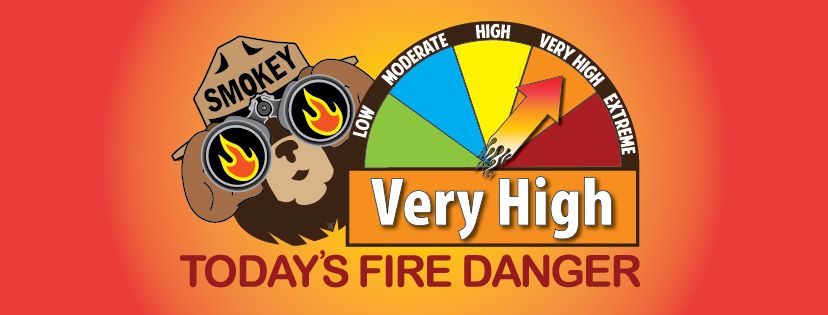
 RSS Feed
RSS Feed